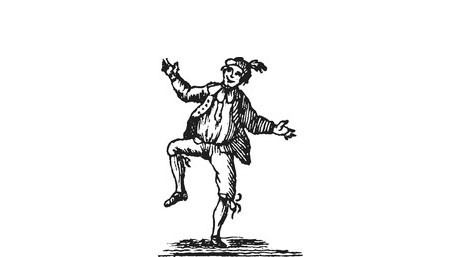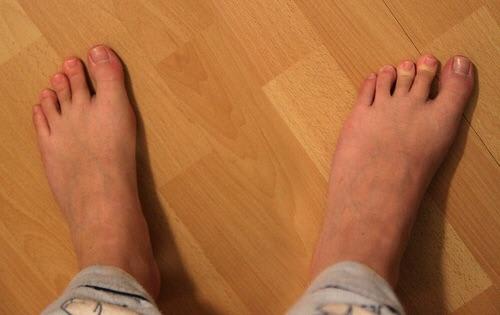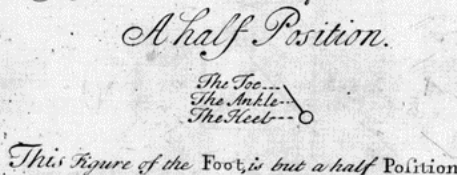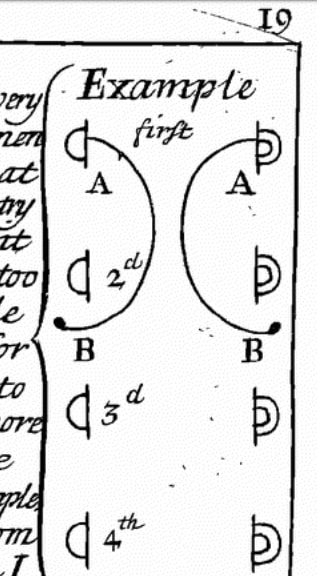We’ve all heard the saying, “You have to walk before you run,” often followed by, “And you have to crawl before you walk.” A simple way of saying that before you can achieve the height of anything you might endeavor, you have to start at the basics. In our world of 18th-century dance, while we might wish to achieve the height of stepping a minuet, you have to start by learning your honors. For your first virtual dancing lesson, we want to introduce you to the most basic, yet important thing, you can master...how to give a proper honor. In this installment, we will be going over proper foot placement, body position, what to do with your hands, counts of music, and overall effect on the dance floor and your partner...

All dances, from common and simple longways dances, to reels, and even minuets begin with an honor to your partner. In our modern day, we would equate these to a bow and curtsey, which isn’t far from what we’re looking for. But before we can go any further, let’s take a look at the feet.

You probably can guess that honors for Ladies and Gentlemen look different, but both actually begin with the feet in the same position. Commonly known even today as the First Position, the dancer will stand with good posture, place the heels of both feet together, and allow the toes to point out at about 45 degrees, or whatever is comfortable. Raoul Fueillet, in his 1715 Orchesography; Or, The Art of Dancing by Characters and Demonstrative Figures gives us some handy diagrams:


In longways dances, we will begin by facing our partner in lines. The gentlemen will be on one side, and the ladies on another, as you see below:

From this position, the ladies’ and gentlemen's honors differ, so we will now speak to them separately. First, the ladies:
Ladies, with feet in first position and facing your partner, you will perform a simple demi plié (slight bend of the knees), being certain to keep your posture upright, and head level as you descend and then ascend for a total of four counts. With your hands, you may hold them together at your waist, or you may take hold of your petticoat. Your eyes will lower as you do. The descent and ascent should be split in equal time, two counts to lower, and two counts to rise.
Gentlemen, also with feet in first position and facing your partner, you will move into the fourth position by either advancing your preferred leg (it doesn’t matter which one, so choose the one you think has the best dancer’s calf attached to it) in front of you to take the position in Monsieur Fueillet’s diagram below:

Gentlemen, be sure to place all your weight on the back foot; you should be able to lift the front foot from the ground and not topple over. At this point, you will begin to demi plié on the back leg while simultaneously bowing from the waist. Your arms are rounded and looking very dapper. Just as the ladies, you will have two counts to sink, and two to rise.
Together, ladies and gentlemen, we can practice (with a safe six-foot distance, of course) our honors! Remember to begin in the first position, counting together 1-2-3-4. Think about what you will do with your feet, hands, head and eyes beforehand, and give it a try. I think you’ll find it’s something you can learn quickly and use often when you return to Colonial Williamsburg when meeting someone new, entering a home or shop, and, of course, with us on the dance floor.
Thank you for joining us for your first online dance lesson! Be sure to check back again soon for lesson number 2, where we will meet on the dance floor! Until then, we remain, as ever,
Yours,
Katharine and Robert
This first dance lesson follows a background on 18th-century dance. If you missed the first post, you can read up here!
Katharine Pittman is a Nation Builder for the Colonial Williamsburg Foundation researching and portraying Martha Washington. Her love of history started young as her parents brought her and her brother to CW with frequency as children, grew while getting her degree from Wake Forest University in history and theatre, and cemented in her almost 9 years with the Foundation. Outside of the 18th century, Katharine enjoys spending time with her family, watching Outlander with her girlfriends and drinking massive quantities of coffee.
Robert Weathers has been working as a first-person interpreter at Colonial Williamsburg since January 2008 and portrays Nation Builder George Wythe. When he is not in breeches, he can often be found wearing shorts no matter the weather, and riding roller coasters with his wife Kaitlyn.
